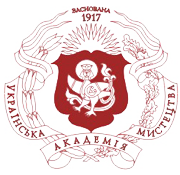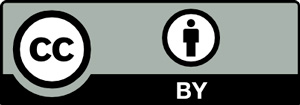Content and design requirements
-
Articles which do not meet the requirements are not accepted.
An article is formatted in Microsoft Word, file extension – .doc (docx), Times New Roman (
14), line spacing – 1.5, all margins – 2 cm.Volume: 7-15 pages
Upper right corner: UDC, ORCID ID below.
Be sure to include a phone number(s) to contact the editors (it will not be published).
— Next line — after a paragraph spacing — the author’s name and surname (right alignment, semi-bold).
— Next line — scientific degree, academic title, the author’s position (right alignment, normal font, italics).
— Next line — place of work or study (right alignment, normal font, italics).
— Next line — e-mail.
Further, if necessary, after a paragraph spacing, information about co-authors according to the above scheme;
For PhD students and undergraduate students – course year, specialty, department, supervisor (name, surname, academic degree and/or academic (honorary) title).
— Next line — after a paragraph spacing —article title (all capital letters, centered, bold).
— Next line — after a paragraph spacing — an abstract in the article’s language, which should contain at least 1600 characters (with spaces) and the following sections: purpose; methods; results; conclusions; and keywords.
— Next line — after a paragraph spacing — information about the author(s), abstract, and keywords in English.
If the article is in English, the title, information about the authors, and abstract should be submitted in English first, and then in Ukrainian.
— Next line — after a paragraph spacing — presentation of main text
The scientific article shall contain the following structural elements (in bold):
- problem statement and its connection with important scientific or practical tasks (relevance of the topic);
- analysis of the latest research and publications which initiated the problem’s solution and the author relies on;
- the purpose of the article;
- main text with a full justification of the obtained scientific results;
- conclusions and prospects for further research.
In-text references are presented in square brackets indicating the source number in the reference list and page number, e.g., [4, p. 125], where 4 is the source number in the list, 125 is the page number.
After the last paragraph (Conclusions and prospects for further research) — after a paragraph spacing — a Bibliography list (the bibliographic description of the list is formatted according to the National Standard of Ukraine DSTU 8302:2015). Online generator of references following DSTU 8302:2015. DOI (digital object identifier) is indicated in the list if any.
The editors encourage references to the articles published in Bulletin of NAFAA and Collection of Scholarly Works “Ukrainian Academy of Art”.
After the Bibliography List (after 1 paragraph), it is indicated References (following APA style (American Psychological Association)). Use standard Ukrainian transliteration for Ukrainian-language works. After the transliterated title, its English translation is presented in square brackets. The same relates journals, collections, etc. At the end, the source language is in square brackets, for example: [in Ukrainian]; [in Chinese]. The Bibliography list completely repeats the List of References.
Examples of compiling sources by link.Supporting data are submitted as separate files in one of the following formats: TIFF, PDF, JPG.
Captions to the illustrations are submitted as a separate file in Microsoft Word, following the numbering of supporting data (Fig. 1, Fig. 2...).
In-text references to illustrations are given in round brackets: (Fig. 1), (Fig. 2), etc.
Pay attention! In captions, the author should indicate its origin or submit permission for publication from the legal successor. The reference to the source of origin is given in square brackets (following the bibliographic description of the National Standard of Ukraine DSTU-2015). The source of origin is included in the list of cited references. If the photo of the illustration was taken by the author, it is indicated: (Author's photo) / (photograph taken by author).
An example of a caption under an illustrative material:
Fig. 1. Vasyl Korchovyi. Confident. Gabro. 170 cm. 2021 [3, 123].
Each table should be numbered and named.
An example of a caption under the table:
Table 1.
Name of the table______________________________ (bold italics)
Example:
УДК 7.025’174
ORCID ID: 0000-0002-1814-4331
Тетяна Тимченко
кандидатка мистецтвознавства, доцентка,
завідувачка кафедри техніки та реставрації творів мистецтва
Національна академія образотворчого мистецтва і архітектури
tetiana.tymchenko@naoma.edu.ua
ПРИНЦИПИ ОСВІТИ КОНСЕРВАТОРІВ-РЕСТАВРАТОРІВУ СВІТЛІ КОДЕКСІВ ПРОФЕСІЙНОЇ ЕТИКИ
Анотація. Мінімум 1600 друкованих знаків (з проміжками). Мета дослідження... Методи... Результати дослідження... Висновки...
Ключові слова: консервація, реставрація, консерватор-реставратор, вища освіта, кодекс етики, Е.С.С.О., ENCoRE.
Теtiana Tymchenko
PhD in Art Studies, Associate Professor,
Head of the Department of Technique and Restoration of Works of Art
National Academy of Fine Arts and Architecture
tetiana.tymchenko@naoma.edu.ua
PRINCIPLES OF EDUCATION OF CONSERVATORS-RESTORERS IN THE LIGHT OF THE PROFESSIONAL CODES OF ETHICS
Abstract. At least 1800 printed charters (including spaces). The purpose of this article...Research methods...Results of the study...Conclusions.
Key words: conservation, restoration, conservator-restorer, higher education, code of ethics, Е.С.С.О., ENCoRE.
Постановка проблеми та її зв’язок з важливими науковими чи практичними завданнями (актуальність теми). [4, c. 125].
Аналіз останніх досліджень та публікацій, в яких започатковано розв’язання даної проблеми і на які спирається автор.
Мета статті.
Виклад основного матеріалу дослідження з повним обґрунтуванням отриманих наукових результатів.
Головні висновки і перспективи використання результатів дослідження.
Список використаних джерел
- Вітченко Д. М. Ремінісценції будинку Г.П. Ґалагана в с. Лебединцях в архітектурних проектах В. Г. Кричевського. Містобудування та територіальне планування. 2016. Вип. 60. С. 27–34.
References
- Vitchenko, D. M. (2016). Reministsentsii budynku H.P. Galahana v s. Lebedyntsiakh v arkhitekturnykh proektakh V. H. Krychevskoho [Inheritance of the building owned by G.P. Galagan in the village Lebedintsy in the architectural projects of G. Krichevsky]. Mistobuduvannia ta terytorialne planuvannia – Urban planning and territorial planning, 60, 27–34 [in Ukrainian].








